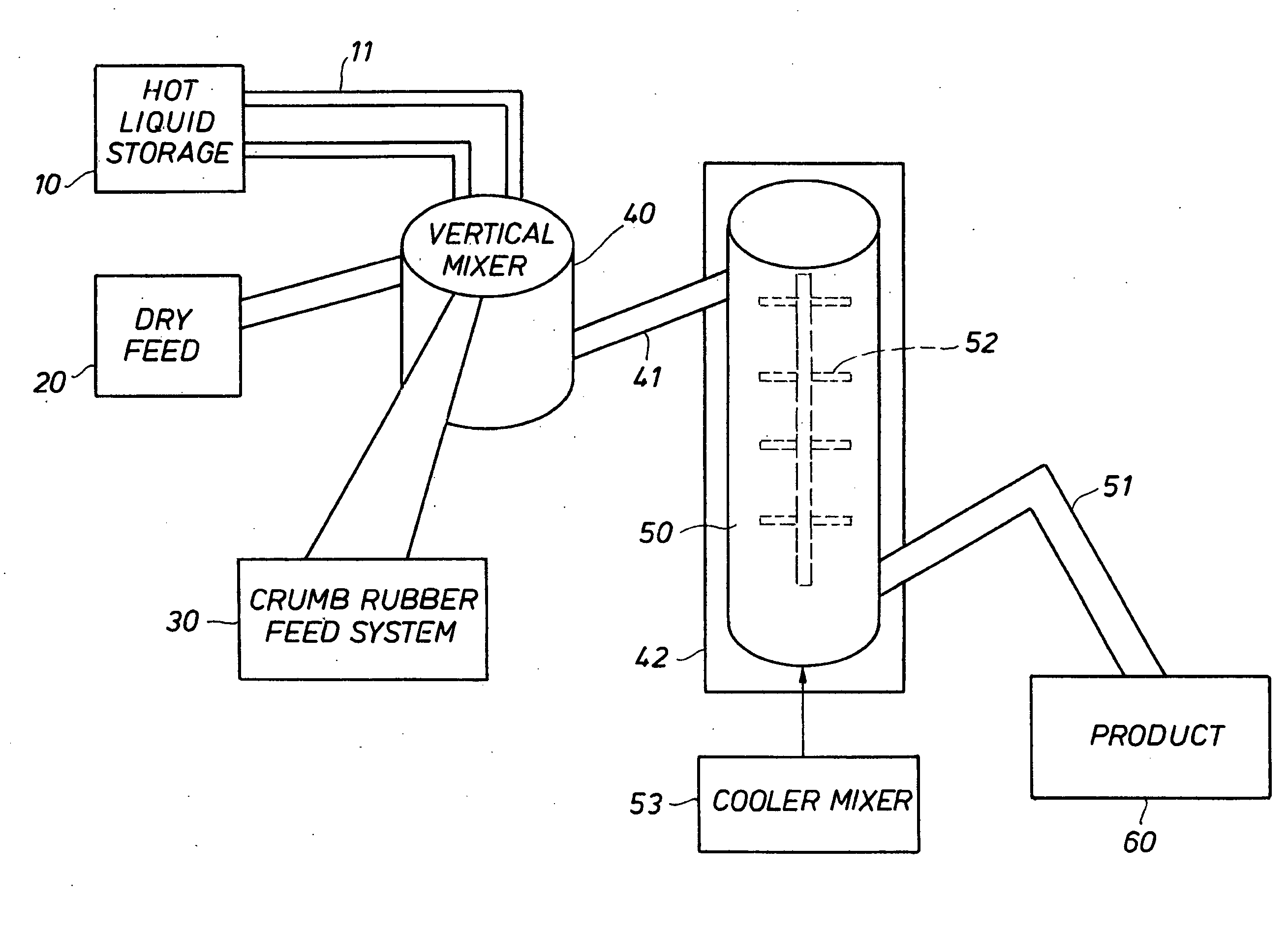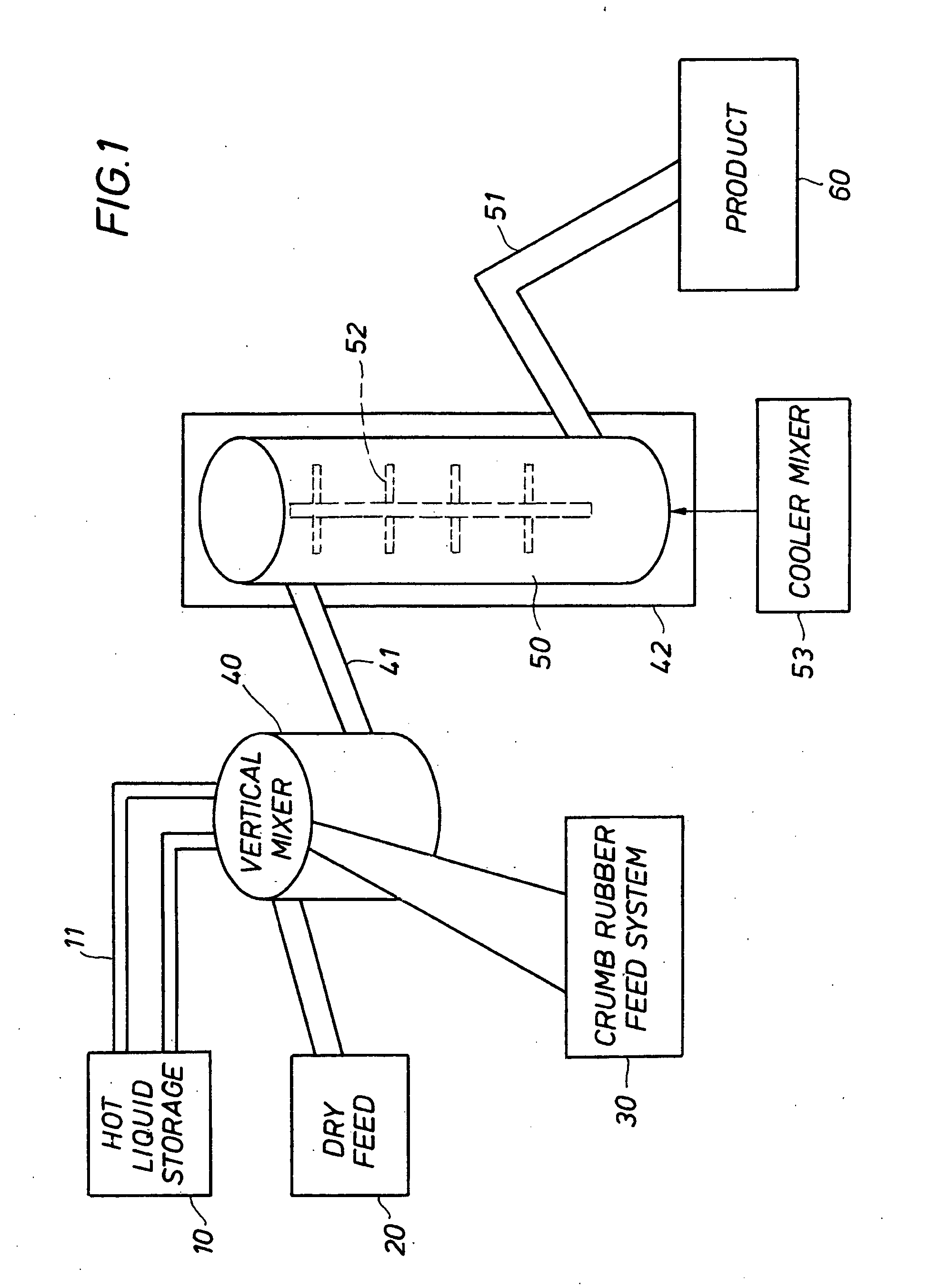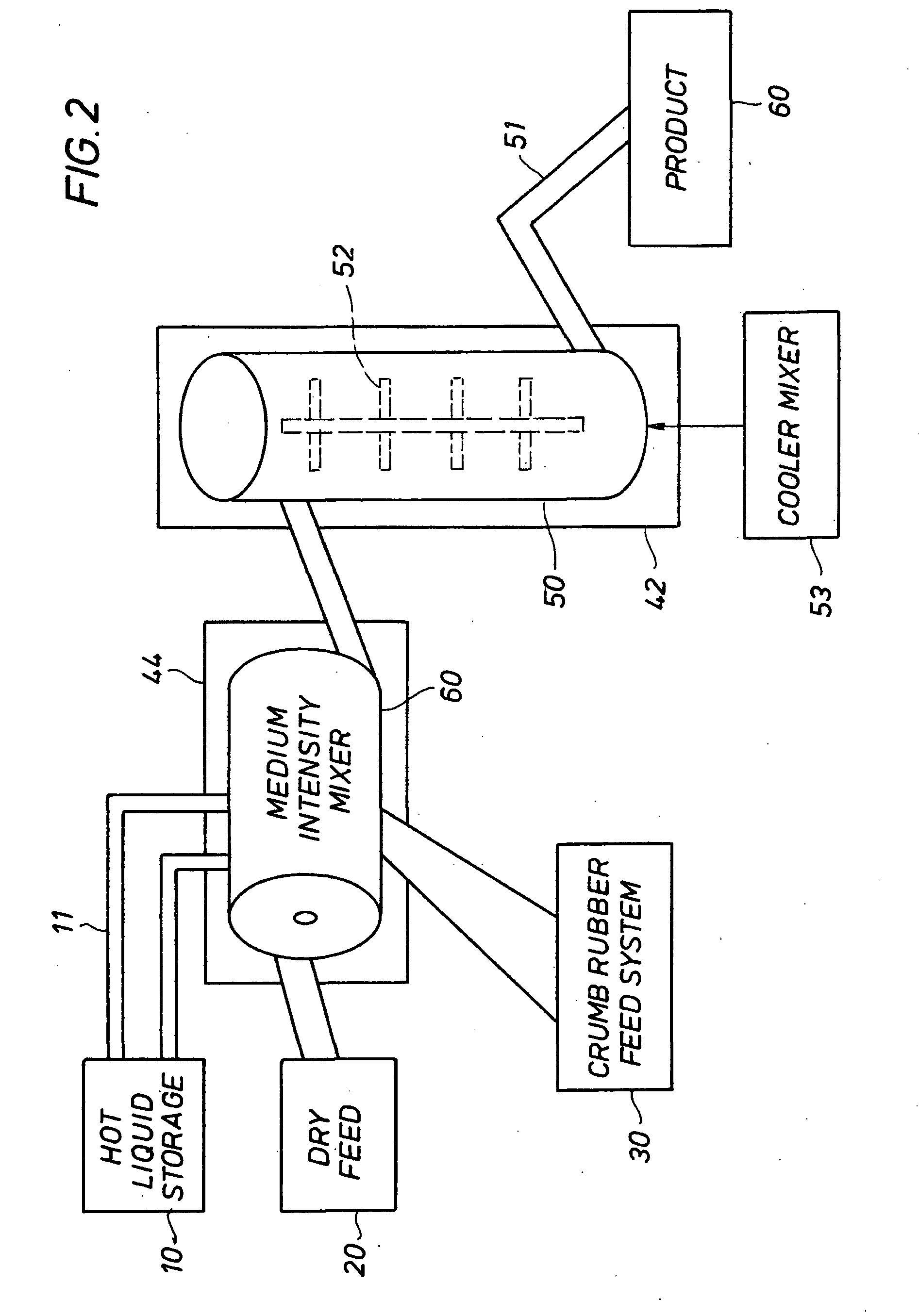Reclaimed asphalt pavement
a technology of reclaimed asphalt and pavement, which is applied in the direction of coatings, building components, building insulations, etc., can solve the problems of affecting the performance of neet asphalt, and limiting the emission of gaseous hydrocarbons, so as to improve the ability to recycle asphalt pavement and modify the performance characteristics of neet asphal
- Summary
- Abstract
- Description
- Claims
- Application Information
AI Technical Summary
Benefits of technology
Problems solved by technology
Method used
Image
Examples
Embodiment Construction
[0020]This invention discloses adjustable formulations for the rejuvenation and / or modification of overly-oxidized as well as neet asphalt binders. The invention also describes flexible methods to employ the invention in asphalt production systems.
[0021]This invention's use as an additive to overly-oxidized as well as neet asphalt binder had as its primary component cured crumb rubber, preferably primarily derived from the ambient or cryogenic processing of scrap tire feedstock. Additional cured crumb rubber may also be comprised of ethylene-propylene dien rubber (EPDM), styrene butadiene rubber (SBR), natural rubber (NR), and isoprene rubber (IR). The preferred crumb rubber useful in this invention ranges in SAE mesh size from about 10 to 400 and more preferably from 30 to 200. The modified crumb rubber in this invention functions in three ways: 1. A heat-activated accelerated blending crumb rubber modifier, “CRM”, useful in either “wet” or “dry” applications 2. A carrying agent of...
PUM
| Property | Measurement | Unit |
|---|---|---|
| Temperature | aaaaa | aaaaa |
| Temperature | aaaaa | aaaaa |
| Temperature | aaaaa | aaaaa |
Abstract
Description
Claims
Application Information
 Login to View More
Login to View More - R&D
- Intellectual Property
- Life Sciences
- Materials
- Tech Scout
- Unparalleled Data Quality
- Higher Quality Content
- 60% Fewer Hallucinations
Browse by: Latest US Patents, China's latest patents, Technical Efficacy Thesaurus, Application Domain, Technology Topic, Popular Technical Reports.
© 2025 PatSnap. All rights reserved.Legal|Privacy policy|Modern Slavery Act Transparency Statement|Sitemap|About US| Contact US: help@patsnap.com



